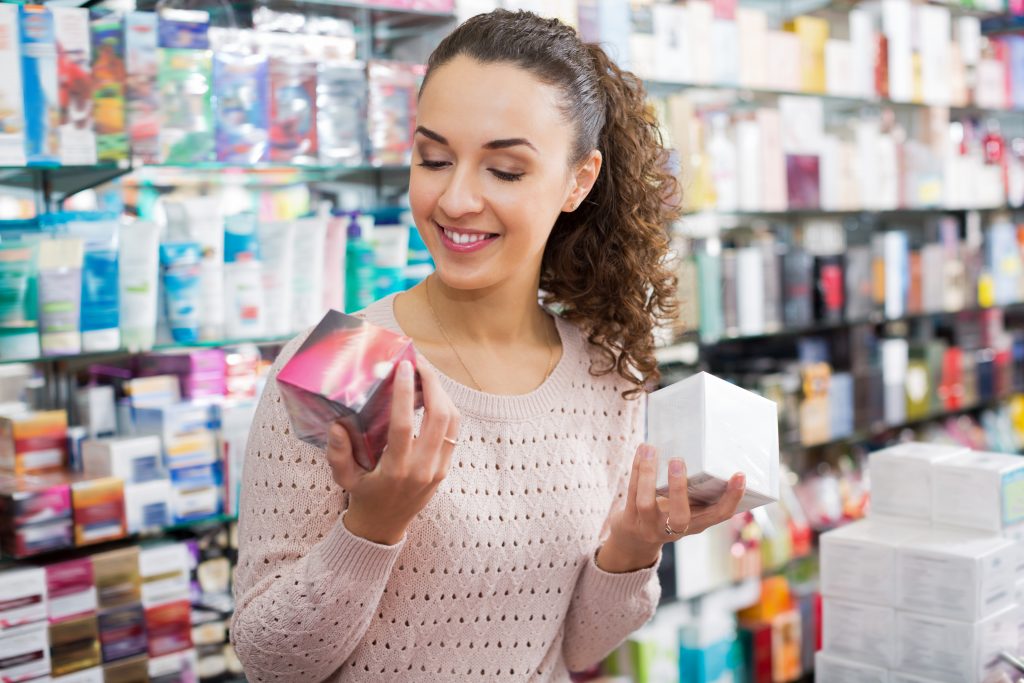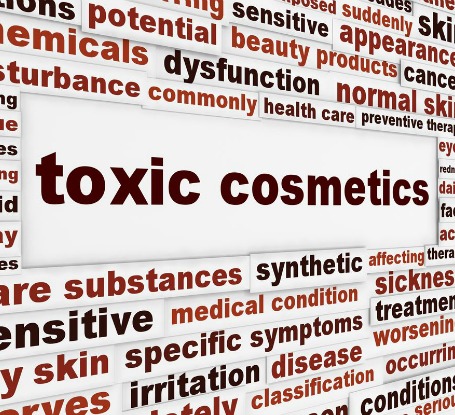
Are these dangerous toxins in your skin care? Check out these 13 most harmful…….
Take a look at the label on your products – these common skin care ingredients are a toxic collection of petroleum byproducts, chemicals and sulfates that cause allergic reactions – but also it is important to know – that everything that you put on your skin is absorbed into your body and ends up in your blood stream! (The same way your skin soaks up the medicine patches.)
The skin absorbs the ingredients of the products you put on your skin – including the toxic ones, and that can cause health problems at a later date. Also these harsh ingredients in your skin care can also destroy your complexion, and make you look years older.

Natural. Organic. Green.We are familiar with these monikers. But when searching for safe cosmetics, how do you truly know what is safe and what is not? By learning to identify which cosmetic ingredients to avoid.
Ignore what may be on the front of a product label and get to the real information. The ingredient listing. Even products that say “Natural” or “Organic” sometimes contain nasty toxins detrimental to our health.
Below are the ingredients best avoided in cosmetics and how to easily identify them on a product ingredient listing. Bookmark and save this list so you can refer to it while shopping. And remember, no clear or readily available ingredient listing on the label? Back away from the product.
1. 1,4 Dioxane
Usage: A chemical by-product of ethoxylation, an ingredient processing method used to make petro-ingredients less irritating to skin
Toxicity: Carcinogenic, suspected cardiovascular and blood toxicant, gastrointestinal toxicant, immunotoxicant, kidney toxicant, neurotoxicant, respiratory toxicant, skin toxicant
Found In: Shampoo, facial cleansers, body wash, bubble bath, baby bath, liquid soap
How to ID: Because 1,4 Dioxane is a contaminant produced during the manufacturing process, FDA does not require it to be listed on a product ingredient listing. EWG.org recommends looking for common ingredients which may contain the impurity, identifiable by the prefix or designations of ‘PEG,’ ‘–eth–,’ ‘Polyethylene,’ ‘Polyethylene glycol’ ‘Polyoxyethylene,’ or ‘–oxynol–’ (FDA 2007)
2. DEA, TEA
Usage: Foaming agent
Toxicity: Skin sensitizer, can form carcinogenic compounds when mixed with certain cosmetic ingredients
Found In: Makeup, body wash, shampoo, skincare
How to ID: DEA or Diethanolimine, TEA or Triethanolamine, Cocamide DEA or Cocamide Diethanolimine, Lauramide DEA or Lauramide Diethanolimine, DEA Lauryl Sulphate or Diethanolimine Sulfate, Linoleaide DEA or Linoleaide Diethanolimine, Oleamide DEA or Oleamide Diethanolimine
For more startling revelations by Liz Thompson please visit
[nextpagelink][/nextpagelink]
Pages: 1 2
